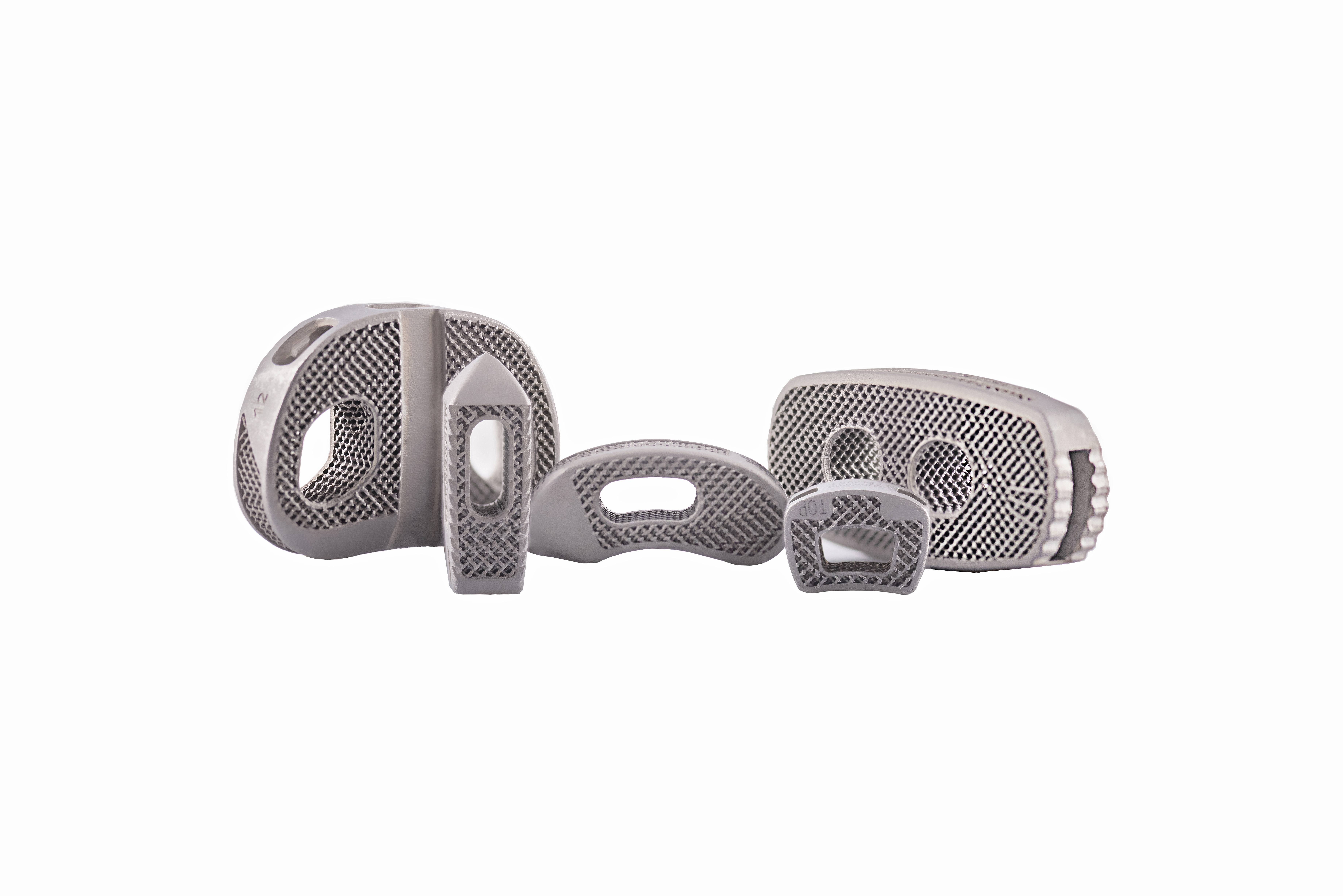
DePuy Synthes, a Johnson & Johnson Medical Devices Companies, recently announced the launch of their new titanium, 3D printed prosthesis designed to treat degenerative spine disease. This system, the CONDUIT Interbody Platform with EIT Cellular Titanium Technology, is designed to model the natural bone structure and facilitate spinal fusion. This announcement was made at the 34th Annual North American Spine Society (NASS) meeting in Chicago.
In the spinal fusion procedure, a collapsed disc is removed and replaced with a vertebral spacer and bone graft to return the spinal column to its natural height and alignment. The goal of the spinal fusion procedure is for the two vertebrae to fuse, forming a solid bone. Through 3D printing technology, the CONDUIT Implants are 80% porous, which offers a structure that mimics the properties of the bone and assists with visualization during and after the surgery. The cellular structure of this implant mimics the human bone’s elasticity.
“My experience with CONDUIT has been in both the lumbar and cervical spine,” said Dr. Wilson Z. Ray, Neurological Surgeon, St. Louis, Missouri. “The implant allows for superior visualization, virtually no scatter on CT scan and early fusion assessment as compared to other titanium interbody devices.”
The announcement of the CONDUIT Implant model comes in the wake of Johnson & Johnson’s 2018 acquisition of Emerging Implant Technologies (EIT), a German 3D printing company specializing in making devices for spinal procedures. This latest implant joins DePuy Synthes’ recently released ACIS ProTi 360° Anterior Cervical Interbody System Hyperlordotic Cages, which function to improve the performance of the PROTI 360° implants. Both of these systems aim to strengthen Johnson & Johnson’s existing portfolio of interbody cages that address several surgical needs using various materials.
“Our goal as a spine business is to focus on the areas with the most potential to solve unmet clinical needs, and we are excited to add advanced materials to our interbody portfolio as another option for surgeons,” explained Nadav Tomer, Worldwide President, Spine, DePuy Synthes. “The launch of the CONDUIT portfolio, together with our comprehensive interbody implant offerings for degenerative disc disease, helps us deliver life-enhancing spine solutions that advance the standard of care for patients everywhere.”
One feature of this 3D printed implant is nanoscale surface roughness, with similar titanium materials being shown in in-vitro studies to increase the adhesion of osteoblasts when compared to traditional titanium alternatives. The implant’s porosity of 80% closely resembles the 50-90% porosity of natural human bone as well. CONDUIT Implants also feature visual clarity intra- and post-operatively using an X-ray, CT scan, and MRI with no significant interference from the structure of the interbody cage.
This latest announcement coincides with Johnson & Johnson’s commitment to integrating 3D printing into healthcare.
“In collaboration with our extensive network of partners, Johnson & Johnson is emerging as one of the leaders in 3D printing resulting in product design freedom, consumer and patient-specific product personalization, speed to market, global supply chain transformation and materials innovation,” the company wrote in a statement on September 25.
#DYK our CONDUIT Interbody Platform is designed to mimic natural bone structure and facilitate spinal fusion? This comprehensive offering to treat degenerative spine disease is on display at #NASS2019. https://t.co/iMbsVuhcBT pic.twitter.com/tc1utLjh9F
— DePuy Synthes (@DePuySynthes) September 25, 2019







 © 2025 Mashup Media, LLC, a Formedics Property. All Rights Reserved.
© 2025 Mashup Media, LLC, a Formedics Property. All Rights Reserved.